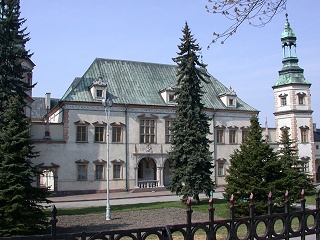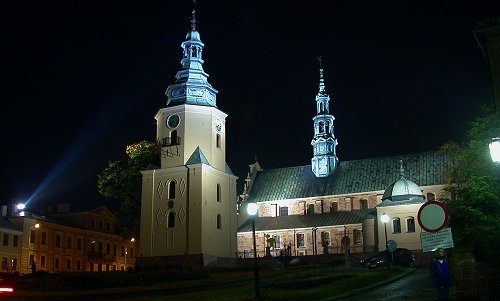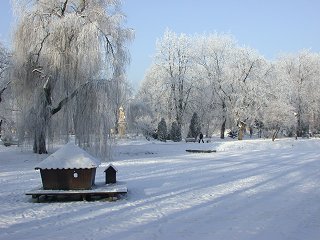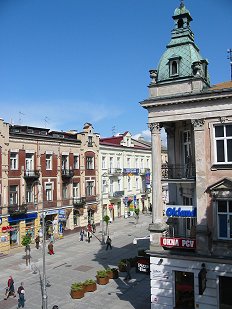Kielce - The capital of Świętokrzyskie province with population about 215 thousand and 900-year-old history, is located on Środkowomałopolska Upland and is the touristic center for: oldest mountains in Europe - Świętokrzyskie Mountains, National Park of Świętokrzyskie and Industrial District of Staropolska.
The geographical location of Kielce, makes it one of the best landscape located cities in Poland. Picteresque views, unique karsic effect, mountain chains, Fir Forest, cultural and technical monuments are the most important tourustic values of the city and region. In Kielce there are five nature reservations - four of rocky-geological type: Kadzielnia, Ślichowice, Białogon and Wietrznia and one forest type: Karczówka.
The city originated in distant times, one of the legends says it was prince Mieszko - son of Bolesław Śmiały (fourth quarter of XI century) who founded the city. But the archeological research confirmed that the settling was present in first half of XI century. The name Kielce was used for the first time in a document from 1213. One of the many legends says it originated from the word 'klecie' the name for primitive shelters in which the settlers lived. Another legend says it were Celts who settled on that area and the old polish pronounciation of 'Celt' is 'Klatowie'. The most probable option is that Kielce took it's name from the clan from Małopolska called 'Kiełcze', hipothetical initiators of the settling.
 |
 |
 |
Between XI and XII century, cracovian bishops became the owners of Kielce, they built a mansion on a hill, called now a 'castle hill'. In 1711 bishop Gedeon of Gryph built a new brick church pn the place of the old aspen St. Wojciech church, and created a collegiate church, moving the parish of St. Wojceich to the bishop's church.
One of the most precious monuments are: Cracovian Bishop's Palace, Cathedral Basilica, Monastery Complex on Karczówka,church of St. Wojciech, church of St. Trinity, palace of T. Zieliński, and the Laszczyk's manor house.
The city of Kielce has a well developed communication , railway and road system, and a nearby airport in Masłów. Efficient and well developed communication allows to quickly contact with the whole world - the key role in this process has the only one in Poland Satelite Service Center in Psary. Also a very important place in an economic develepmont of Kielce is modern display-trade object: Targi Kielce [Kielce Trades] which are on a third place among trades organizers in Poland.
For many years many cultural events has been taking place: artistic overviews, feasts and concerts (Kielce's Days, Scout's School Youth Culture Festival). Many things connected to the past are in museums, the most important one is National Museum in Bishop's Palace. There are precious paintings from XVII and XVIII century, furniture, Gobelins, marble fireplaces and portals. It is one of the richest galleries of polish paintings. The museum of Stefan Żeromski's School Years gathers things connected to this writer: first editions of his books, paintings, prints, pictures. In monumental Laszczyk's Manor House from XVIII century is a Museum of Kielce's Village presenting many interesting ethnographical expositions.
In Tokarnia near Kielce, one can see one of the largest of (skansen) in Poland, showing the way the villagers in XVIII century lived. The Museum of Geological Collection has a rich exposition of rocks and minerals characteristic for Świętokrzyskie Mountains.
Undoubtedly one of the greatest cultural investments is Kieleckie Centrum Kultury, which helps in many artistic, publishing, exhibition and concert activities. In the Building Of the Center is a music hall named after Oskar Kolberg.
There are three theatres: Theatre named after Stefan Żeromski, Theater of a Puppet and Actor "Kubuś" - One of the most modern and most beatiful theatres for children in Poland, and Dance Theatre of Kielce.
